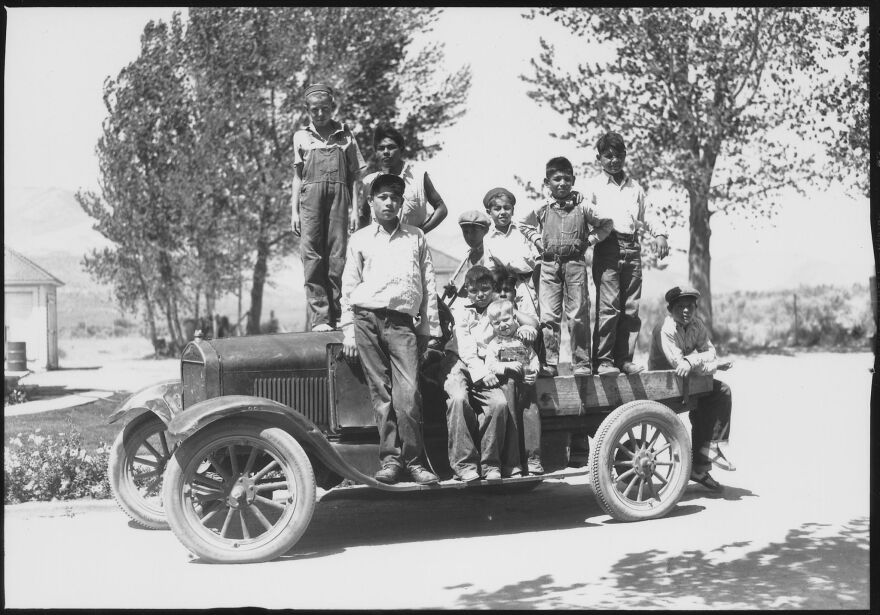Editor's Note: Nevada Public Radio's Native Nevada podcast explores the issues facing the state's indigenous peoples, including educational challenges that continue to this day.
After nearly 1,000 unmarked graves were found at former Indian boarding schools in Canada, U.S. Interior Secretary Deb Haaland announced an initiative to study Indian schools here, including one just outside Carson City.
The former Stewart Indian School is now a state-run museum, but about half of the former campus, including its cemetery, was returned to the Washoe Tribe of Nevada and California. Officials with the Nevada Indian Commission announced earlier this month they were collecting information about the school so they would be ready to participate in the federal review.
Stacey Montooth, director of the commission, said the investigation is welcome but will touch a nerve in the state’s tribal community.
“To prepare for any questions that Secretary Haaland might have, I've met with elders and the burial committee from the Washoe Nation to try to get a sense of what they would like to see,” she said. “With permission from their leadership, I was able to go to the cemetery and we're dealing with upwards of 200 unmarked graves.”
Haaland has said the investigation can help “uncover the truth about the loss of human life and lasting consequences of the institutions,” which frequently forced tribal children to attend.
The Stewart School opened in 1890 and closed in 1980. and Montooth said students from more than 1,000 tribes attended the school during the 90 years it was open.
Children were stripped of their tribal cultural identity, including language and customs, and forced to live in a highly structured environment that Montooth likened to boot camp.
Tribal schools nationally, Montooth said, were run with the philosophy of “kill the Indian; save the man.”
“The boarding schools were so impactful,” she told State of Nevada. “We had families that have never really ever been able to return to their traditional structure, nor have they been able to embrace modern-day America.”
She said experiences at the school still haunt some tribal families more than 40 years after its closure, with many who attended never learning the parenting skills that would have been taught in a more nurturing home environment.
“When you hear about those stories, the statistics about the lack of successful educational outcomes in public schools, the low number of students who graduate from high school, and the low number of Native American students who go to college, you understand more how that could happen,” she said.
Stacey Montooth, director, Nevada Indian Commission








